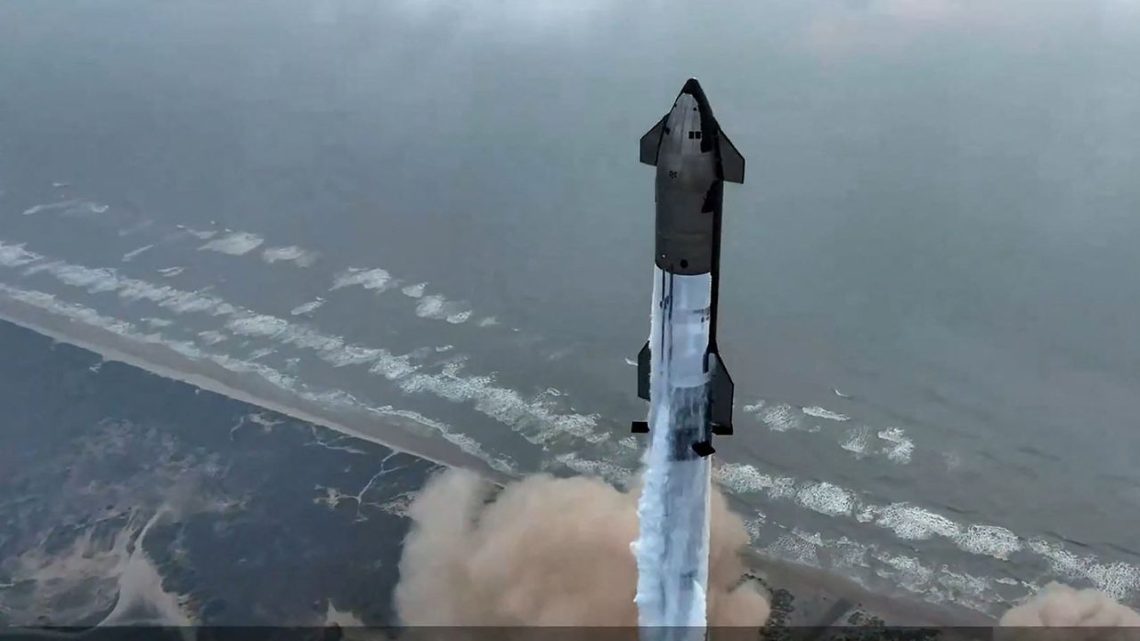
SpaceX’s Starship Achieves Major Milestone with Successful Full Flight
June 10, 2024SpaceX’s Starship rocket has achieved a significant milestone by completing its first full flight, surviving re-entry in a landmark event for the prototype system designed to eventually carry humans to Mars. This breakthrough comes after three previous missions ended in explosions or disintegration.
Starship, standing nearly 121 meters (400 feet) tall, launched from SpaceX’s Starbase in Boca Chica, Texas, at 7:50 am (12:50 GMT). It soared to space, reaching an altitude of nearly 211 kilometers (130 miles) and a speed exceeding 26,000 km/h (16,000 mph). Despite losing many tiles and sustaining damage to a flap during the intense heat of re-entry, Starship managed a controlled descent and soft landing in the Indian Ocean, just 65 minutes after liftoff.
SpaceX CEO Elon Musk celebrated the achievement on X, the social media platform he owns, stating, “Despite loss of many tiles and a damaged flap, Starship made it all the way to a soft landing in the ocean! Today was a great day for humanity’s future as a spacefaring civilization!”
The success of this mission is a critical milestone in SpaceX’s development of a reusable rocket system, which both NASA and Musk envision as essential for future space exploration. NASA has already contracted a modified version of Starship for its Artemis program, which aims to return astronauts to the moon by 2026. NASA Administrator Bill Nelson congratulated SpaceX on X, saying, “We are another step closer to returning humanity to the Moon through #Artemis — then looking onward to Mars.”
This mission marks a significant improvement over previous attempts. Starship’s first launch in April 2023 exploded minutes after liftoff, reaching approximately 40 km (25 miles) above ground. The second attempt in November 2023 also ended in an explosion after reaching space. The third test flight in March 2024 made it much farther but broke apart during atmospheric re-entry about 64 km (40 miles) above the Indian Ocean.
The latest success underscores SpaceX’s commitment to real-world testing rather than relying solely on laboratory simulations. The next challenge for the company is to develop a “fully and immediately reusable orbital heat shield,” according to Musk. This advancement is crucial for building a reusable satellite launcher and moon lander.
Much hinges on the successful development of Starship, as NASA plans to use it to return astronauts to the moon, competing with China’s ambitious lunar program. China aims to send astronauts to the moon by 2030 and has made significant strides, including a second landing on the moon’s far side for a sample retrieval mission. The successful re-entry and landing of Starship represent a significant step forward in SpaceX’s mission to revolutionize space travel. With ongoing tests and improvements, the goal of creating a fully reusable spacecraft capable of ferrying humans to the moon and Mars is becoming increasingly feasible. This achievement not only propels SpaceX ahead in the race for space exploration but also brings humanity closer to becoming a truly spacefaring civilization.

